Harry Shaw
Private 27030 Harry Shaw, 15th Battalion, Hampshire Regiment
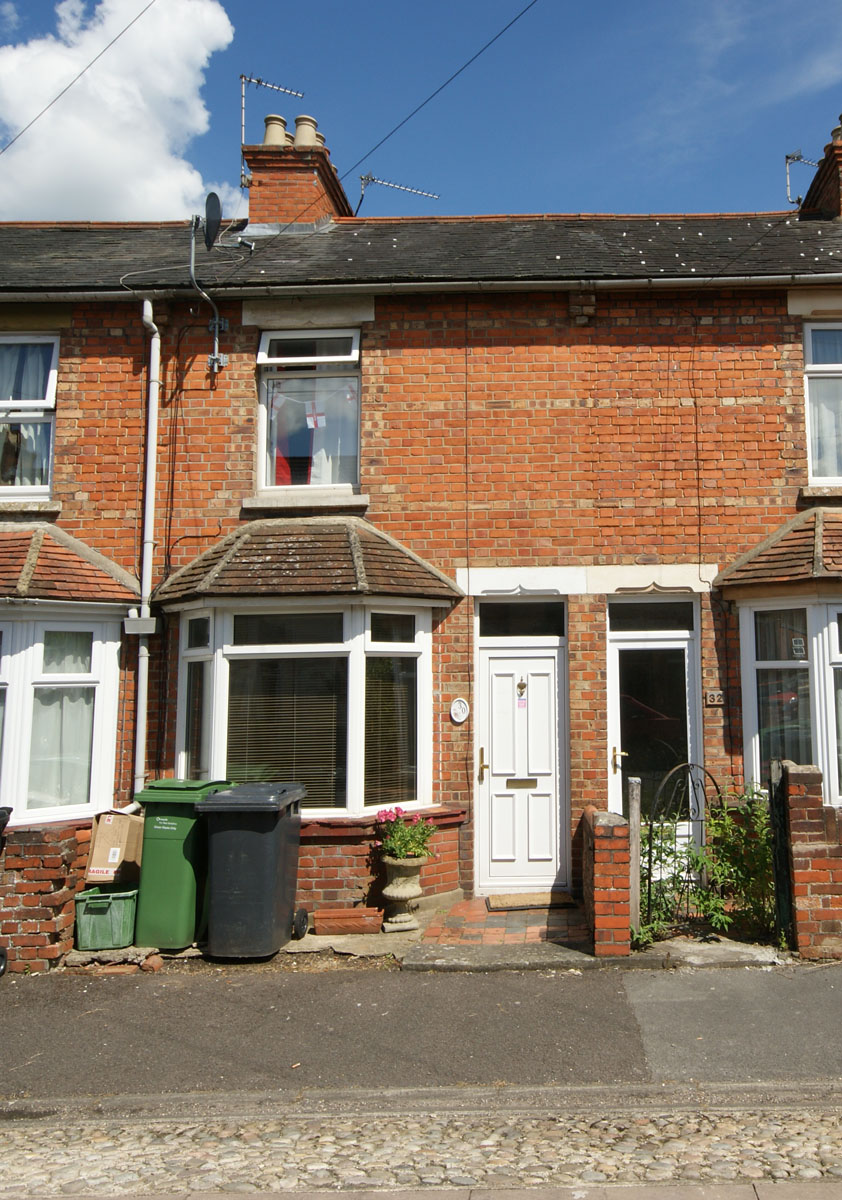
30 Connaught Road. The Shaws were living here at the time of the 1911 Census. Prior to John's death the family lived in a cottage in Mayor's Lane. |
In 1909 John died aged 78 leaving Kate with a young family, but most of the children were still living at home and the eldest were working, no doubt helping with the family budget. Harry left school the following year and worked as a Gordon Boy.
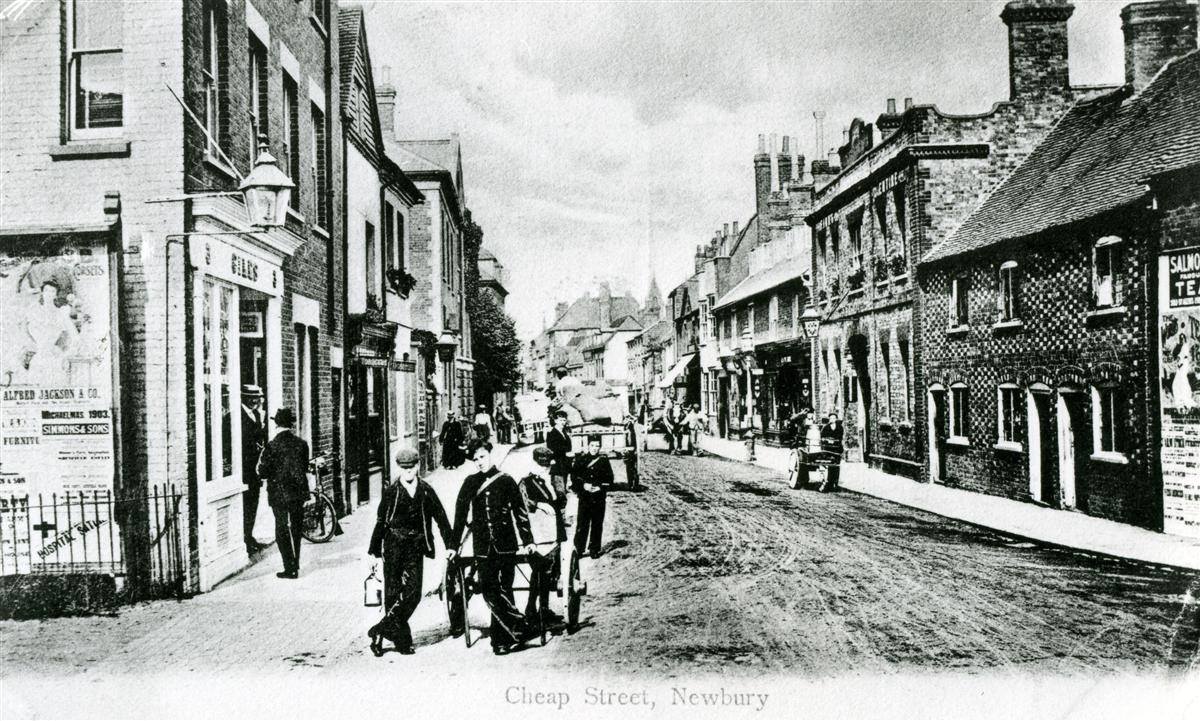
Gordon Boys in Cheap Street ca1911. Harry was working as a Gordon Boy at that time, perhaps he is one of the lads pictured? |
The Gordon Boy organisation was run on pseudo-military lines and gave employment to young lads who could not find more stable jobs. The uniformed boys would do small jobs, run errands and take messages for anyone who needed occasional assistance in this way.
When war was declared in August 1914 many young lads like Harry enlisted, despite being too young to serve overseas (the Army rules were that a man had to be 19 before he could be sent to fight). However, Harry, did not take this course of action, he waited for over a year (his mother was paid a war gratuity amount that suggests he enlisted in October 1915) before volunteering to serve in the Hampshire Yeomanry, known as the Hampshire Carabiniers.
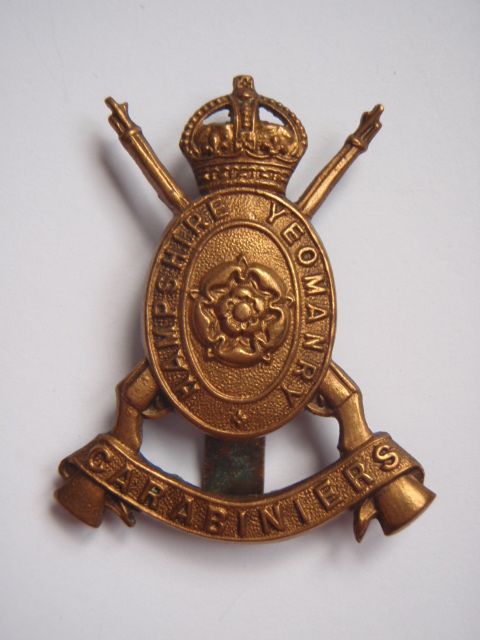
The regimental cap badge of the Hampshire Yeomanry. |
This was a Territorial cavalry unit (Harry’s elder brother, John, was already serving with the Berkshire Yeomanry) - John’s example may well have been the reason for Harry’s choice of a yeomanry regiment. The timing could well have been influenced by the growing realisation that conscription would soon be introduced after which recruits would be unlikely to get so much, if any, choice as to where they served. October 1915 was also the month of Harry’s 19th birthday. It is possible that he signed up together with his brother George, who served in the same unit.
After training Harry was sent to France, either when the 1st/1st Hampshire Carabiniers went as a unit in June 1916, or as a replacement in the ensuing months.
In France the regiment was mainly used as XI Corps cavalry – but Harry did not stay with the regiment; at some point he was transferred to the infantry, specifically to the 15th (Service) Battalion, Hampshire Regiment. Shortly after his death the remaining 1/1 Hampshire Carabiniers were transferred en masse to the same battalion.
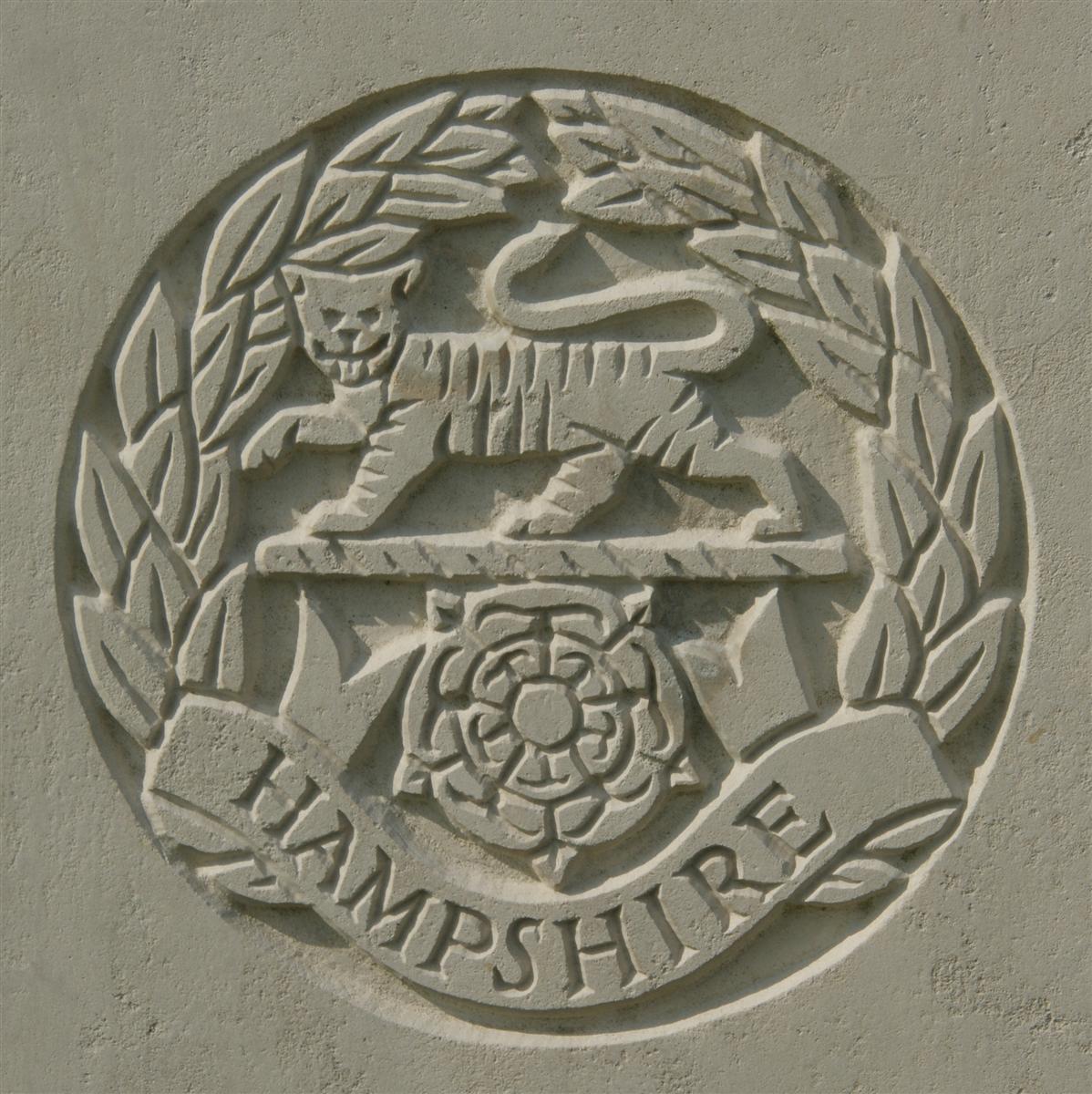
The regimental badge of the Hampshire Regiment, as used on CWGC headstones. |
Just when Harry made the move to the infantry is not known, nor are the circumstances of his death recorded. The battalion’s war diary for the day of his death offers no clues:
War Diary, 15th (Service) Battalion, Hampshire Regiment – 7 June 1917
Creslow. Billets in CRESLOW. “A” Coy shelled out of billets in TOUQUET BERTHE, barn there destroyed by fire & RE dump destroyed (no casualties).
However, his place of burial does give a clue – he is buried in grave number XII.H.16 in Enclosure No.4 at the beautiful Bedford House Cemetery south of Ieper (Ypres).
This was the site of Chateau Rosendal, a country house in a small wooded park with moats – the Chateau was destroyed in the fighting (a tiny remnant remains in the cemetery) but the site was used by field ambulances. Despite the name these were military units that included vehicles for the transport of injured men, but also stretcher bearers and an advance medical facility close to the front. Wounded men would be brought to a field ambulance from the first aid dressing posts located in the trenches; from the field ambulance the wounded would be evacuated to a casualty clearing station and from there to hospitals in France or the UK. Of course there were those who didn’t make it all the way to hospital – the sites of medical facilities are very often marked by a neat Commonwealth War Graves Commission cemetery. The war diary records several casualties in the days immediately before Harry’s death, when the 15th Hampshires were manning the line in Ploegsteert Wood (Plugstreet to the Tommies). Since Harry made it no further than a field ambulance there is a chance that he was the casualty referred to in the terse diary entry for 4th June:
War Diary, 15th (Service) Battalion, Hampshire Regiment – 4 June 1917
Ploegsteert Wood. Occupation of front line. 1 casualty (wounded).
One can only conjecture as to how he was wounded – an enemy shell, a sniper’s bullet, an accidental discharge of a comrade’s rifle; it is unlikely that we will ever know.
His family announced his death in the local paper:
Newbury Weekly News, 28 June 1917 – Killed in Action
SHAW – June 7, 1917, killed in action in France, Pte Harry Shaw, the dearly loved fourth son of Mrs Shaw, and the late Mr Shaw, of 3, Mill Lane, Newbury, aged 20. – Greater love hath no man than this, that a man lay down his life for his friends.
The following year the anniversary of his death was marked by a further announcement:
Newbury Weekly News, 6 June 1918 – In Memoriam
SHAW – In ever loving memory of our dear son and brother, Harry, killed in action in France June 7th, 1917. – Gone from our home, but never from our hearts. From Mother, Sisters, and Brothers, Will and George.
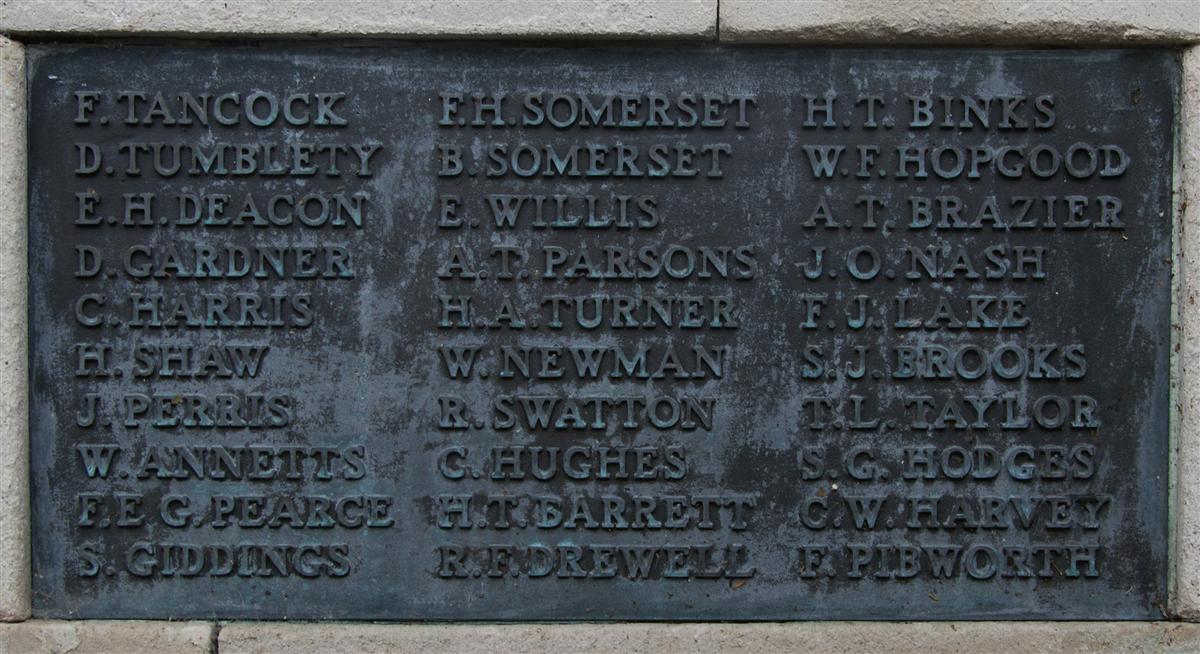
Harry's name on Newbury War Memorial (middle left) |
Family
Harry’s brothers John, George and William were all of an age to serve during the war – voluntarily of through conscription. John is listed in the Active Service Roll printed in the local paper from the start of the war until spring 1916 (after the introduction of conscription the Roll’s prime purpose was to encourage enlistment). John appears in the Roll from early 1915 as serving in the Berkshire Yeomanry. A John Shaw who served as Trooper 1872 was invalided out of the army on 2 September 1916 through sickness, quite possibly a disease picked up in the regiment’s short stay on the Gallipoli Peninsula in late 1915. He lived out his life in Newbury dying there in 1953, aged 63.
George appears in the Roll at the same time as Harry, both being listed as serving with the Hampshire Carabiniers. Odds are that he, like Harry, was transferred to an infantry unit, very possibly the Hampshire Regiment; sadly the loss of most service records in a fire in 1940 means that it is not possible to tell for sure.
William would have been conscripted unless he was unfit or in a reserved occupation – but his name is so common that it is impossible to trace his service.

